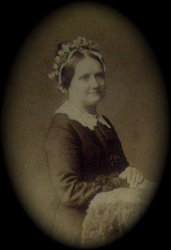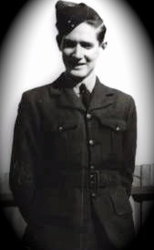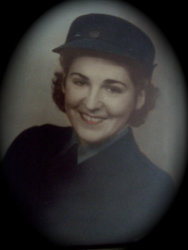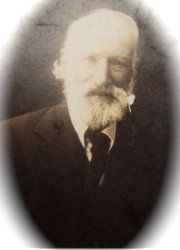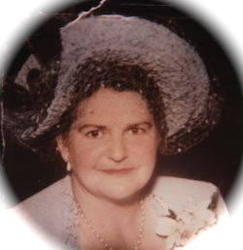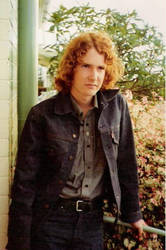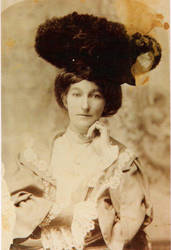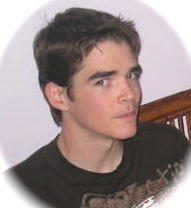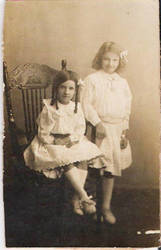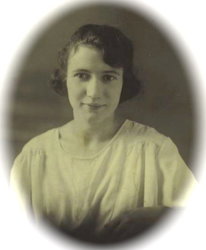| About Britain and Ireland to Australia
Please sign in to see more. The research that is being completed here was started by my parents Jean Juleff Roy and William Francis Roy more than fifty years ago.
Life at Fish River
As early as the 1820s there were land grants in the Fish River and O'Connell area. Gold was discovered on Fish River in 1823 and this soon brought thousands of new settlers. There have been many silver and copper mines in the district and the area is still well known for its sapphires and gemstones.
It is said the town of Oberon grew from Fish River. Oberon was originally known as Bullock Flat. It was later re-named after the King of the Fairies in A Midsummer Night's Dream.
Henry Rivett arrived in Australia in 1850 with his wife Esther. A carpenter and wagon builder, he settled in Kelso, where he set up a wagon building business in which his sons, Oliver, John, walter, George and William also worked. George Rivett married Harriett Field in 1889. their son Walter married Catherine Bullock. William married Susan Wallace and their daughter Hephzibath married Robert Hutchison in 1881. Robert Hutchison was a great great uncle of mine, the grandson of George Hutchison.
Thomas Hassall, the famous Church of England minister, arranged for a church and residence to be built in O'Connell in the 1860s. When he arrived, he wrote that he had sadly buried 'two beautiful babes' that same day. Indeed, the graves of hundreds of babies must lie somewhere in the cemeteries of Fish River and O'Connell, once marked by wooden crosses, long gone.
Along the river banks gold prospectors lived in tents and roughly hewn bark settlers huts. There were midwives, doctors, butchers, farriers, carters and farmers. The Cobb & Co. coach came weekly to drop off supplies at the earthen barn which still stands in O'Connell. Hens, ducks, turkeys, dogs and other farm animals roamed freely around the river settlement. Boys and girls carried water in buckets from the river to their homes. Rabbit, kangaroo and beef stews boiled continuously in large pots over open fires, some inside, some outdoors. Smoke from hundreds of fires rose into the sky. At night there was singing and storytelling beside large burning logs.
In the 1870s the local Aborigines attacked and the women and children sheltered in the barn at O'Connell. Thomas Hassall kept them at bay and finally negotiated a settlement whereby the Aborigines were given a steer to eat.
Virtually no sign of all this activity remains today. The O'Connell Hotel still stands, built in the 1860s; the earthen barn, thought to have been built in the 1840s; the Church of England and residence formerly occupied by Thomas Hassall; and one or two old houses, built by the wealthier settlers from more permanent materials.
Sarah Lofty was born on 14th November 1831 in Essex, England, the daughter of my 3rd great grandmother Maria Lofty of Ticehurst, Sussex and an unknown father.
Sarah moved to Australia with her mother and stepfather Jude Kemp. They arrived in 1839.
When Sarah was 17 she married Robert Barton, a music printer by trade, and convict, transported for life. He was 4 feet 11 inches tall. He had previously been married in 1838 to Jemima Chapman, a convict with a colourful history. They had had Harriett, George (died before he was a year old), George Thomas and Louisa Barton at Fish River.
Sarah moved to Fish River and lived in a slab hut not far from the river. Robert Barton was born in 1845 and died the same year. Twins James and Thomas died after birth due to being a few weeks premature. Four years later in 1849 another Robert was born. He also died. Not until 1851 did they have a baby Robert who survived. Then followed Jane, who died before she was a year old. Another Jane born in 1861 married William James Hutchison.
Twins Maria (named after her grandmother Maria Lofty) and Sarah Barton died as well. Another Maria Barton was born and died in 1855.
By this time, Sarah was 24 years old and had buried six children, with only one, Robert Barton surviving.
The next six children of Sarah and Robert all survived: William 1857, twins Maria and Sarah 1859, twins Jane and Emma 1861 and Elizebeth Matilda 1863.
By 1885, Robert Barton Jnr. owned a property he named Milford at Fish River.
On November 22nd 1863 Robert Barton died at the age of 37 years. There is a headstone in the O'Connell Church of England Cemetery. The next year Sarah Lofty married Thomas Herring, an Englishman who had come to Fish River to look for gold.
Their children were Hannah (died aged 8 years and 3 months, headstone in the Church of England Cemetery, O?Connell), Thomas Herring and Henry James Herring.
Sarah Lofty died aged 62 in Hartley. She was buried in O'Connell next to Thomas Herring. Thomas Herring had died six years before her.
Robert Barton born 1851 remained in the O?Connell region. He married Elizabeth Pearce in 1872. The Pearce family was prominent in O'Connell with Mary Jane (died 1907) and James Pearce (died 1939) buried in the Church of England cemetery. Their children Anna, Robert, William and Allan were all born at Fish River.
Maria Barton, daughter of Robert Barton and Sarah Lofty, married Johann Peime in 1881 and their first five children were born in the Fish River-East Macquarie region, the last three being born in Oberon. Two children were born to Maria before she was married. They later took the surname Peime. Johann, who was born in Germany,had two children with his first wife Mary Ann, who died. The youngest was 12 around the time he met Maria Barton.
One of the first land granats in Bullock Flats was given to Charles Whalan in 1839. By the 1850s Charles Whalan had built a flour mill on the banks of Fish River Creek. Thomas Whalan married Charlotte Burchett in 1865. Charlotte's mother was Charlotte Lofty, the sister of my 4th Great Grandmother.
George Kemp, half brother of Sarah Lofty, was born in Ticehurst, Sussex in 1835. Probably his family members were farm labourers. He was only four years old when his parents sailed to Australia. On the way his baby sister Peggy was born and died.
George Kemp married Hannah Thorncraft in 1858 when he was 23. They had six children in the Bathurst region. Hannah died of typhoid fever when the youngest, Mary, was still a baby.
George married Mary Johnson in 1877 when George's youngest daughter was eight years old.
He was already 42. He had brought up his six children by himself. George and Mary had five children at Fish River, where George was a prospector. They were William 1877, Henry 1880, Isaac born and died in 1882 and buried at the O'Connell cemetery, Alice 1883 and Eleanor, 1887. A sixth baby, Leila, was born in 1891 in Yetholme. By 1885 George Kemp owned a small farm at Diamond Swamp.
George Kemp died in Sunny Corner in 1925.
Edward Taylor was a farm labourer born in Altarnun, Cornwall. He arrived in Australia in 1839 on the Roxborough Castle. Edward and Martha's daughter Cumberland, born on board ship and named after the Captain, died at sea, as did many other babies during those times. Edward went into partnership with neighbour William Jenkins and together they ran a carrying business with a bullock wagon travelling between Sydney & Orange or Bathurst on trips which could last six weeks. Edward settled in Fish River in 1840, where there was a need for his bullock dray to deliver essential items. While he was at home between journeys, he panned for gold in the Fish River. When they arrived at Fish River, Edward and his wife Martha already had a 6 year old boy, William, as well as two younger ones also born in Cornwall. From 1841, they had Susanne, John, Edward, George, Elizabeth and Isaac at Fish River. In 1852 the family moved to Jerrys Meadows where Joseph and James Taylor were born. Edward Taylor lies buried in picturesque Muttons Falls Cemetery beside his wife Martha, who died in 1884.
Edward and Martha's son William married Ann Hutchison in 1852, aged 18, and became a farmer at Hassan's Walls. By 1885 he owned his own land at Tarana. Ann Hutchison was a cousin of Sarah Lofty and my great great great aunt.
Mrs Margaret Parkinson conducted a school in her home at Fish River before the Fish River School opened. A patchwork quilt made by her is in the Oberon Museum. Making patchwork quilts as well as other crafts would have been a popular pastime at Fish River.
Now there are only paddocks and river sand where once hundreds of families lived their lives.
Copyright Louise Juleff Roy 2006
Alice Roy's Story of the Depression and Drought in Wollongong
During the Depression we were living in Northcott Street Wollongong. Dad had a few acres of land that went down to the creek that used to be there. He'd get up early to see if there was any work in the mines or the steelworks and if there was no work he would go fishing or rabbiting to get food for the family. We lived through the depression and hardly ever went hungry. Of course there were no fridges in those days, only ice chests, so Dad would share the rabbits and fish with the neighbours. Dad had a cow called Sally and she loved him. She'd rub her head up on him. One day Dad was getting watercress from the creek and Sally came up behind him to rub her head on him and put him into the creek. Bill and I couldn't stop laughing.
Someone had to milk Sally early in the morning and it was usually Dad and sometimes Bill. Then Mum would separate the milk to make cream and butter. Mum worked hard. She was cooking and making things all day so that we would have plenty to eat. We had fruit trees, and when the fruit was ripe Bill and I would climb the trees and sit there eating the fruit. Dad had a whole paddock under cultivation with vegetables. There was a bad drought in those days and the town water was only turned on for an hour a day. Most people had tanks but they were empty because there had been no rain. Dad watered the vegetable garden from the creek. We all had our jobs and collecting water from the creek was one of them. Bill had to fill up two heavy kettles for the stove because he was the oldest. I had to fill up the bath and then we'd all share the same bathwater. There was the copper that had to be filled for the washing and two rinsing tubs. Bill and I used to follow Dad everywhere he went. Every weekend Dad would kill three chooks. Mum would cook them in the fuel stove and then we'd often go and have a picnic at Stewart Park and take some of the neighbours with us.
Corporal Sydney Harry of Gallipoli
In 2005 the unmarked grave of Sydney Harry was found in the Church of England Cemetery, Nowra. He died following World War 1 due to wounds received at Gallipoli as a member of the 4th Battalion, 6th Reinforcement (the 6th of the 4th depicted in the Mel Gibson movie 'Gallipoli'). Uncle Sydney was involved in the Battle of Lone Pine and saw nearly half of the men in his battalion die between the 6th and 8th of August 1915. He was a Signalman. This year the War Graves Commission is to build a memorial on the gravesite. Uncle Sydney's mother was Mary Juleff of Redruth, Cornwall, which is where Great Grandfather Michael Broad Juleff was born.
The Irish Freedom Fighter and the Bushranger
In 1809 another reluctant emigrant arrived, Michael McGrath, my fourth great grandfather, who married Elizabeth Somerville, twin daughter of convict James. Michael is said to have been involved in the 1798 Rebellion in County Wexford, which is the next county to Waterford, where Michael was born. He was put on trial in Kilkenny.The worst defeat for the rebels was at Vinegar Hill, co. Wexford, on 21st June.
Michael continued his resistance of British rule in the new colony, at one stage being found guilty of harbouring a bushranger, Thomas Ford, also known as Ward. Transported to Port Macquarie for an alleged burglary, Michael saw no hope of release and asked his friend James Ward on his release, to take care of Michael's wife Elizabeth and her seven children. This he did, marrying Elizabeth and having five children with her. James, my step-fourth-great grandfather, was later transported to Norfolk Island, where he died in 1837.
"Criminals often will surrender and go quietly....Outlaws...because they're pure...never will..."
The Bullocky
In 1818, Jude Kemp's uncle, Isaac Kemp of Ticehurst, Sussex, was found guilty of burglary with force of arms and transported on board the "General Stewart" which was commanded by the evil Captain Robert Granger. Many convicts died on the voyage and many more were admitted to the Benevolent Hospital in Sydney on arrival. Isaac was fortunate enough to be sent to work in Bathurst where he had many relatives who had arrived as free settlers. On his release, Isaac became a bullocky and was unfortunately run over and killed by his own bullock dray at Cobra in the Bligh district in 1857 aged 59 years. He had been married three times and his only living child William survived him. William went on to have fourteen children.
The Seventeen Geese
In 1825 George Hutchison, convict, arrived in Sydney aboard the "Mistral". At home in England he had been a farmer and harnessmaker. He and Ann Irvin, William Hutchison and Mary Hutchison, his parents, had been found guilty of stealing seventeen geese. A trail of feathers had led to the home of the guilty. There is no record of Ann,
William or Mary arriving in the colony. Like many others, they may have died on the way.
The Pirate
Thomas James McGrath, son of Michael McGrath, Irish Rebel, was involved in a robbery from his employer with some older boys after he had been apprenticed from an Orphanage in Sydney where he had been placed after his father Michael was transported to Port Macquarie. He was convicted and sent to Tasmania where he was put to work building roads. He was only about fifteen at the time. He served his time, married and had children. His wife's family were in the shipping and whaling industry and Thomas became a ship's captain. He travelled to America and around the coast of Australia and to New Zealand and skippered whaling boats. He lost his ship in a storm and then worked as master for someone else. For some reason he stole the ship, went whaling and blackbirding (Slave Trading in the Pacific Islands)and lived for a while on Stewart Island south of New Zealand. The authorities were after him for barratry (stealing a boat) and piracy but he went to Papeete where he lived and later died. His death certificate can be obtained from Tahiti but his burial place is unknown.
The South American Connection
In 1865, Benjamin Howard decided to migrate from Norfolk to Chile with his wife Adelaide Johnson and their family. He obtained a position as a Coppersmith with the Ferrocarril del Sur Railways. With him went his brothers, John and George, who also worked on the railways, and Adolph, who became Vice-Consul of Valparaiso, Chile. On the journey, the ship "Payta" was diverted to Peru and Islay Payta Howard was born in the Bay of Islay, Peru.
Alfred Dawson was a seafarer who often went to Chile. While in Chile, Alfred met Clara Ann Howard and married her in Santiago. Three of their children were born in Chile, then they moved to Sydney where my great grandmother Priscilla Dawson was born.
The family lost contact, and Aunty Polly in Chile asked that her nephew Jim Robinson continue to search for family members in Australia. In 1963, he sent his nephew George Munoz as a forward scout and George discovered all of his Australian relatives. Uncle Jim Robinson arrived soon after to meet us all.
Many family members still live in Chile and also in Buenos Aires, Argentina.
The Lives of the Adventurous Lumleys UPDATE: Joseph Lumley was not in fact my great great grandfather. Instead, it was Joseph Myers, a travelling acrobat.
Joseph Lumley was born in Sutton-in-Ashfield, Nottingham, England in 1812, the son of John Lumley and Ellen Anderson. He and his brother John were convicted of stealing clothes in 1830, and in 1831 they were transported to Australia. Joseph went to Bathurst, but in 1837 he committed another crime and was sent to Norfolk Island. His brother John was already there after being convicted of manslaughter in Tasmania. John escaped from Norfolk Island in a boat with four other convicts in December 1840. In 1844 Joseph was sent to Tasmania.
In about 1853 when he was 41, he went to Melbourne and settled in the Upper Hawthorne district. There he married Susan Ellard who was born in Tipperary in 1837. She was seventeen years old.
Their children were Thomas, Joseph Richardson, Charles Arthur, Marion, Elizabeth (married Charles McMurdie), Herbert and Ernest Samuel.
Joseph Richardson Lumley moved to Hay around 1880 where he married Susannah Ruth Jenkins (known as Susan) in 1881. Their first son Joseph Arthur Lumley was born in Hay that year. Joseph Arthur Lumley became a Painter and Miner. In 1892 a rail link was built to Cobar where there was copper, lead, silver, zinc and gold. Joseph Arthur Lumley was employed by the Great Cobar Copper Mining Company and there he met his wife Olive Painter. Later he moved to another mining community, Catherine Hill Bay, with his family.
By 1884 Joseph and Susan Lumley had moved 150 miles north of Hay, to Euabalong. Wagons and coaches crossed the Lachlan River carrying wool at Hillston where the river was shallow and the town grew from a hotel built there in 1863. Joseph was working as a carrier, perhaps with a bullock dray as his father had done. Alice Jane Lumley, my great grandmother, was born in Dine Dine near Euabalong, in 1884, after Joseph Lumley and Susan Jenkins had separated. DNA testing has shown her father was Joseph Myers, travelling acrobat.
Alice Jane Lumley next moved her family to Manly, where Thomas Charles, Elizabeth, Jack (married Elsie Martin) and Frank (died aged 31) were born. Subsequent children had various fathers, including Joseph Lumley's brother Charles.
In 1898 Susan and Joseph were divorced. Joseph Lumley had moved to Wellington, cutting timber, and using the name Edward O'Brien to avoid paying maintenance. He died in Wellington in 1910, and as no-one knew anything about him, he was buried in the Catholic section of the cemetery.
In 1906, Susan Jenkins married John Reed, a Dapto publican, whose name lives on in Reed Park, Dapto. She was 49 years old. Susan's son Thomas Charles moved to Dapto from Manly. Thomas obtained work as a stockman on local dairy farms. Alice Jane was unmarried and had a son Thomas George Lumley, my grandfather, who was re-named Thomas George Roy after she married William Gibson Roy. William Gibson Roy signed a declaration that he was Thomas' father in about 1914. I later obtained a letter written by him in which he wrote to his wife, "Alice has a child by me and I am going to stick by her." However, I'm sure William Gibson Roy was aware that Thomas George was not his son, as he did not receive any of the Roy names, and I think it's likely W.G. Roy and T.G. Peoples were known to each other. Thomas George, b. 1905, was named after his biological father, Thomas George Peoples, an Irish publican from Lismore, who died in December 1905.
Thomas Charles Lumley, Alice Jane's brother, enlisted for World War 1 in December 1915, Rank Sapper, 1st Field Company Engineers, Occupation Stockman, Religion Church of England, next of kin Mrs Susan Reed of Dapto. First he went to Alexandria, Egypt, for training, then Tel-al-Kabir. He served in France and became ill with pneumonia, probably due to being gassed, and was hospitalized in England. In June 1917 he was shot in the leg in Belgium and once again returned to England where he married a teacher, Annie Amelia Gregory of Twyford, Berkshire, on 1st September 1917. Her father was also serving and was a farmer. In 1919 they both returned to Australia. Two of their children were Rose Mary and Beatrice Lumley. Annie Amelia died in Sydney in 1974.
Susan Reed died in Dapto in 1918, just a year before her son returned from the war.
Alice Jane Lumley had her next son, named William Henry Roy Lumley on his birth certificate, in 1909. Then came Arthur James Roy Lumley 1910 and Jack Roy Lumley in 1911. DNA testing of descendants has shown that W.G. Roy was the father of all the subsequent children.
In 1912 Alice Jane married William Gibson Roy in Wollongong.
In 1913 Harold Gibson Roy was born in Kembla Street Wollongong and lived only six minutes. He is buried in Wollongong Cemetery. Elsie May Roy was born in 1914. William Gibson Roy died in the Pacific Ocean off Bellambi in 1922 after going fishing in stormy weather. He was whistling "Nearer My God to Thee" as he left Wollongong harbour.
Alice Jane married William Timms in 1924 and had a daughter Alice Timms.
Arthur Manly Thomas Lumley, brother of Alice Jane Lumley, married May Steele in 1939 in Rozelle. It was her second marriage and there were no children.
Eileen May Steele's biological father was also found via DNA testing. He was John Joseph Eastick, an industrial chemist from Norfolk, England, who came to Australia for a few years to manage the Bundaberg sugar mill. He was 48 years old when May Steele, who was 19, went to work for the family as a governess and servant. No doubt he paid the family a good sum of money to move to Brisbane so there would be no scandal.
May Steele's father was not William Steele. He was Patrick Francis Savage, who worked as a groom in Sydney, and also worked at the famous Haddon Rig Sheep Station near Warren, N.S.W. Patrick Savage deserted Annie Crowley (later known as Steele) and was taken to court many times by the police to force him to pay maintenance. Patrick died at the age of 39 from the effects of alcohol.
May Steele wanted Patrick Savage acknowledged in some way, so she insisted that my father, William, have the middle name 'Francis'. My mother was annoyed about Dad's middle name, saying it was the name of 'one of grandma's former boyfriends', as everyone thought May's father was her mother's husband. |

